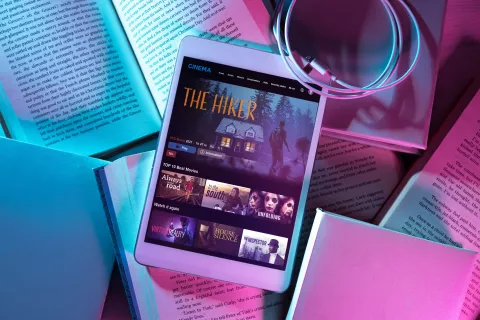1. Make Emotion Visible
Visuals evoke emotion faster than words. A single photograph, video clip, or infographic can instantly convey joy, tension, hope, or urgency.
Tip: Choose imagery that aligns with the emotional tone of your story. For example, warm colors can evoke comfort or optimism, while dramatic lighting can build suspense or intrigue.
2. Use Media to Simplify Complex Ideas
Some concepts are difficult to explain with text alone. Charts, diagrams, infographics, and animations transform abstract or technical information into intuitive, easy-to-understand visuals.
Example: A bar graph comparing customer satisfaction over time communicates insights far faster than paragraphs of statistics.
3. Maintain Consistency in Visual Identity
Your visual style should reinforce your brand story. Consistency in color palettes, typography, imagery style, and video aesthetics ensures that audiences instantly recognize your content — whether it appears on Instagram, LinkedIn, or your website.
This cohesion strengthens emotional connection and trust across platforms.
4. Integrate Visuals With Narrative Flow
Visuals should complement the story, not distract from it. Each image, video, or graphic should serve a clear purpose: highlighting a key point, illustrating a transformation, or deepening emotional engagement.
Tip: Avoid overloading with unnecessary visuals. Strategic placement amplifies meaning and keeps audiences focused.
5. Leverage Motion and Multimedia
Videos, GIFs, and animations create movement and rhythm, which help maintain attention. Motion also allows you to show processes, transformations, or before-and-after scenarios in a way static images cannot.
For digital campaigns, short videos or animated stories often outperform text-based posts in engagement and shareability.
6. Interactive and Immersive Media
Interactive visuals — such as clickable infographics, 360° videos, AR/VR experiences, or gamified storytelling — empower audiences to explore stories at their own pace.
Interactive storytelling increases engagement, creates a sense of agency, and fosters deeper emotional connection with your content.
7. Combine Media With Narrative for Maximum Impact
The most effective visual storytelling seamlessly combines text, images, video, and design into a cohesive narrative. Each element should reinforce the story’s message, emotional tone, and purpose.
Example: A case study video might combine customer testimonials (video), key metrics (infographics), and a narrative voiceover to create a complete, compelling story.
In Conclusion
Visual storytelling transforms ordinary narratives into immersive experiences. It enhances emotion, simplifies complexity, strengthens brand recognition, and engages audiences across channels.
In an era where attention spans are short and competition for engagement is high, the brands and creators who master visual storytelling will be the ones whose stories are not only seen — but felt, remembered, and shared.



